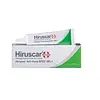What's inside
What's inside
 Key Ingredients
Key Ingredients

 Benefits
Benefits

 Concerns
Concerns

 Ingredients Side-by-side
Ingredients Side-by-side

Water
Skin ConditioningPanthenol
Skin ConditioningLactic Acid
BufferingButylene Glycol
HumectantAminomethyl Propanol
BufferingSalicylic Acid
MaskingMethylpropanediol
SolventXanthan Gum
Emulsifying3-O-Ethyl Ascorbic Acid
Skin ConditioningPolysorbate 20
EmulsifyingDextrin
AbsorbentPolydextrose
HumectantGlycerin
HumectantAmylopectin
Niacinamide
SmoothingDimethicone
EmollientLecithin
EmollientSclerotium Gum
Emulsion StabilisingPullulan
Ethylhexylglycerin
Skin ConditioningDisodium EDTA
Asiaticoside
AntioxidantMadecassic Acid
Skin ConditioningAsiatic Acid
Skin ConditioningMelia Azadirachta Leaf Extract
Skin ConditioningMandelic Acid
AntimicrobialPhenoxyethanol
PreservativeWater, Panthenol, Lactic Acid, Butylene Glycol, Aminomethyl Propanol, Salicylic Acid, Methylpropanediol, Xanthan Gum, 3-O-Ethyl Ascorbic Acid, Polysorbate 20, Dextrin, Polydextrose, Glycerin, Amylopectin, Niacinamide, Dimethicone, Lecithin, Sclerotium Gum, Pullulan, Ethylhexylglycerin, Disodium EDTA, Asiaticoside, Madecassic Acid, Asiatic Acid, Melia Azadirachta Leaf Extract, Mandelic Acid, Phenoxyethanol
Ingredients Explained
These ingredients are found in both products.
Ingredients higher up in an ingredient list are typically present in a larger amount.
You might know this ingredient as Ethyl Ascorbic Acid, a more stable version of ascorbic acid.
Like other types of vitamin C, this ingredient has many benefits including reducing wrinkles, skin soothing, dark spot fading, and fighting against free radicals.
3-O-Ethyl Ascorbic Acid interferes with the process of skin darkening, helping to reduce hyperpigmentation. It also encourages the skin to produce more collagen.
Once applied, 3-O-Ethyl Ascorbic Acid is converted to Vitamin C deeper in the skin's layers. This process is slow but makes this ingredient more tolerable for skin.
The optimum pH range for this ingredient is 4 - 5.5
Learn more about 3-O-Ethyl Ascorbic AcidSalicylic Acid (also known as beta hydroxy acid or BHA) is a well-known ingredient for treating skin that struggles with acne and clogged pores. It exfoliates both the skin's surface and deep within the pores to help clear out buildup, control oil, and reduce inflammation.
Unlike AHAs (alpha hydroxy acids), salicylic acid is oil-soluble. This allows it to penetrate into pores which makes it especially effective for treating blackheads and preventing future breakouts.
Salicylic acid is also known for its soothing properties. It has a similar structure to aspirin and can calm inflamed or irritated skin, making it a good option for acne-prone skin that is also sensitive.
Concentrations of 0.5-2% are recognized by the U.S. FDA as an over-the-counter topical acne product.
It can cause irritation and/or dryness if one's skin already has a compromised moisture barrier, so it's best to focus on repairing that before introducing this ingredient into your routine.
While salicylic acid does not increase sun sensitivity, it’s still important to wear sunscreen daily to protect your skin.
If you are looking for the ingredient called BHA or Butylated Hydroxyanisole, click here.
Learn more about Salicylic Acid